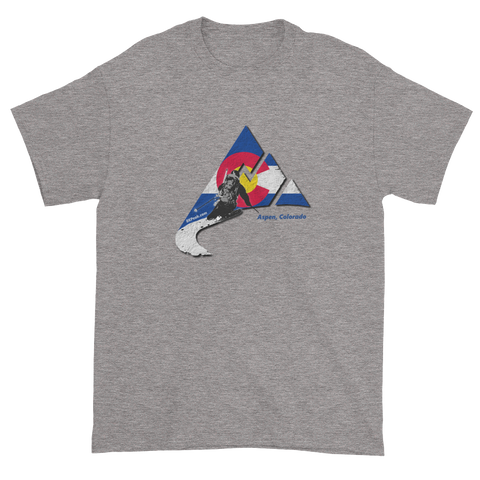
Ok, you have purchased all the gear. You have spent the time and money to enter the wonderful world of AT ski touring. You have spent the winter walking up the local ski area, and have even done a few hut trips. You have even ventured into the backcountry in the spring and you are hooked. Ski touring the local peaks is something you have fallen in love with. You page through Face Book posts from people out in far off ranges, and you find yourself dreaming of doing this yourself. You are in the best shape of your life, and your interest is reaching peak levels; you want to do that! The only issue, you don’t know where to start.
At 8kpeak, we have been getting emails from people just like you, and we have done our best to get people geared up, and have had success helping people figure out how to make it happen. It’s happening often enough to where we realized that there isn’t a lot of information specific on the subject. Well not any longer.
Over the days and weeks to come, 8kpeak is going to take our lifelong experience of venturing to the world’s greater ranges, and we are going to be posting what amounts to as a how-to set of blogs to help people realize their dreams. We have spent the last 30 years heading to remote parts of Alaska, South America, and Asia on a natural progression that has taken us on expeditions to nearly 50 of the world’s highest peaks. In that process, we have not only taken the steps to learn how to pick appropriate peaks for all levels of expedition ski mountaineering, we have figured out some of the logistical aspects that can make or break your expedition. We have made all the mistakes, and also overcome them. So these blogs will really be a handbook of how to do this.

The areas covered will include:
1) Picking an objective. This is a critical place to start. The peak has to meet your experience level in order to make the most of your expedition. At any experience level, when you venture to the greater ranges, it’s going to put you in an arena that is simply different than local peaks of the ranges found in the lower 48 states. Altitude, glaciers, different cultures, and logistics all come into play. Picking the appropriate peak is critical for maximizing your experience.
2) Picking your mates. An expedition to the greater ranges will take more than a day to pull off. The greater ranges involve peaks that are much more involved, much larger, much higher than what you are probably used to, so they take weeks. Pick the wrong partners, and friction can deteriorate friendships into enemies. There is nothing worse than having to spend time in a tent with someone who you find is irritating or has different objectives with the expedition.
3) Picking the right gear. If you are interested in planning an expedition, chances are you have most of the gear you will need. However, the greater ranges will demand things you might not have. Ropes, hardware, tents, cook kits, and a lot of other items will need to be acquired in order to be prepared for the different environment than you have learned in. When you get off the airplane in La Paz Bolivia, if you forgot or didn’t realize you need a half dozen pickets, chance are remote you will be able to find them. Something as simple as gas for your stove becomes critical. You can’t fly with gas, so you have to look ahead.
4) Logistics. Different countries and different regions entail different forms of ID and paper work. Permits, visas, all need to be understood. Finding operators that can pick you up at the airport, get you to and from the mountain, and back to the airport are important. If you find yourself in Kashgar China at the airport and don’t have a contact waiting for you, unless you speak the local language, you won’t even be able to hail a taxi. Getting back to the gas, you need to know before you depart what the operator can obtain. There are all kinds of things that need to be known long before you head out and we can really help. Air tickets, travel and rescue insurance, and a list of other details need to be understood. You need to understand your food and what is available in country. Logistics are probably the most difficult aspect to a successful expedition and we can really help.
5) Funding. An expedition is going to entail a cost. You have to understand the costs. Much of the costs will fall out from the planning and logistics, but from experience, you have to set up budgets for everything as a first stage, and build in contingencies. From experience, there is nothing worse than getting a week out from departure, and realizing you need $1500 bucks for a garbage deposit and not having it. Our experience has opened our eyes for the questions to ask the operator, and general knowledge of what to expect.
6) Training. As the logistics are being worked out, training must be started. For logistics and training, the time to start is NOW. In general, you need 6 months to properly train. Through trial and error and years of training, we have devised a three phase program that gives us the combination of power and endurance. Climbing at altitude and skiing requires more than just endurance from getting out locally. When you are fit to climb a high peak, you need a bit more bulk and power than what a lot of people think and the program accommodates this: Strength training, then a combination of strength and endurance, phasing into more endurance.
7) Mental training. Along with the physical training, you have to “get your head on straight” in order to have a great trip. For your first expedition, things like never having been to altitude creates major question marks that can create a ton of anxiety. Anxiety before and during an expedition wastes a lot of energy so we will discuss what to expect and how to settle things down.
8) Pre trip preparation. Taking care of things at work, getting all your bases covered before you depart also create anxiety before a big trip. You are going to be gone for a long time and this is daunting. That anxiety can drag you down, deplete your immune system, make you extremely tired. This exposes you to getting sick. How to look ahead and some of the details to help organize your life are processes we have done many times. There is a phycology involved and in short, nothing drastic will happen while you are gone in the month or so that you are away. Enjoy the process.
9) Executing the expedition. We will discuss the process from the airport to the mountain and back. There are various strategies that can be used to “get up a peak”. All will be discussed as well as advice on how to “climb the peak”. You will understand a bit about the various cultures you will be traveling in which can be daunting as well if experiencing it for the first time. On mountain logistics and schedules will be discussed. This is an important aspect because making camps, doing carries, and figuring out timelines is what the sport is all about.
10) Altitude. What is altitude and how does it impact the human body. How do you deal with it successfully will all be discussed in conjunction with the execution. Altitude is the main hurdle in big mountain ski expeditions in that it exposes you to all the perils of the mountains. Dealing with altitude mandates understanding it, and then working with it. It’s a huge aspect to an expedition, but once you understand it, you can also really “enjoy” it.

Stay tuned, and in the process, you will have a better understanding of “how to do it” with regards to experiencing your sport in the ultimate venues. The blogs won’t be able to uncover every rock on the journey, but they will give you enough information to allow you to confidently approach your expedition in a manner that gives you the basics to have a great adventure.


